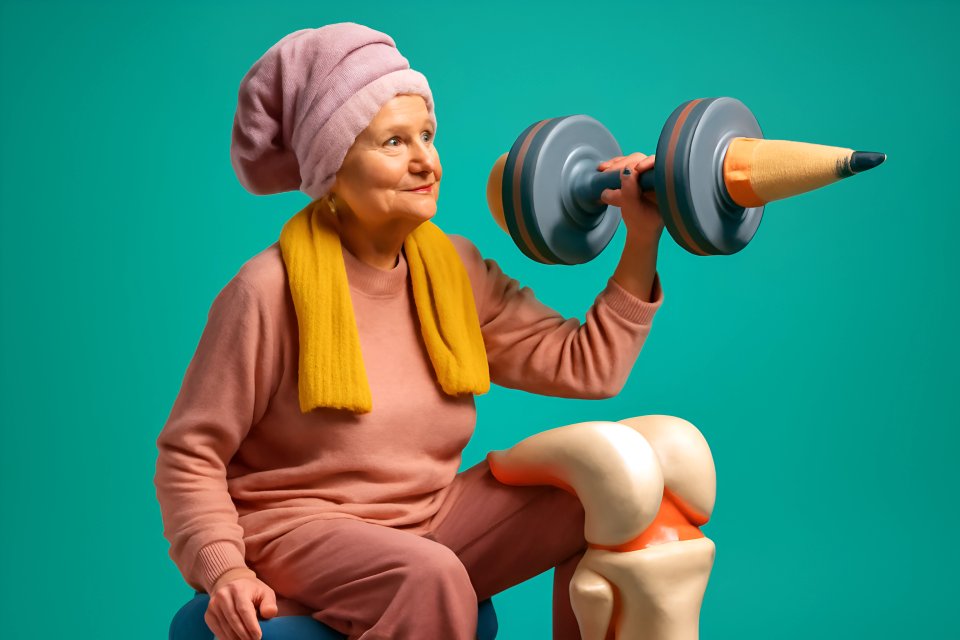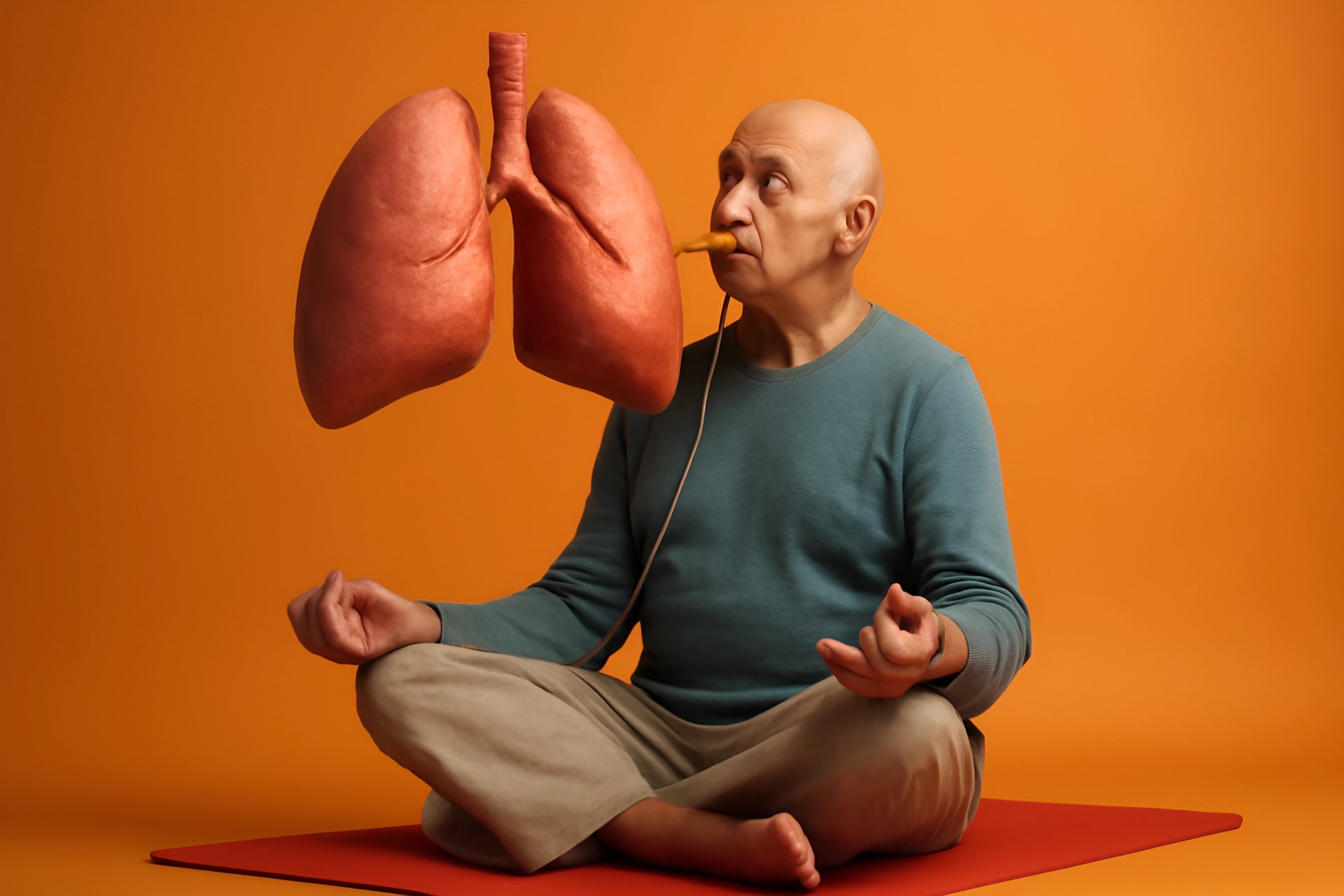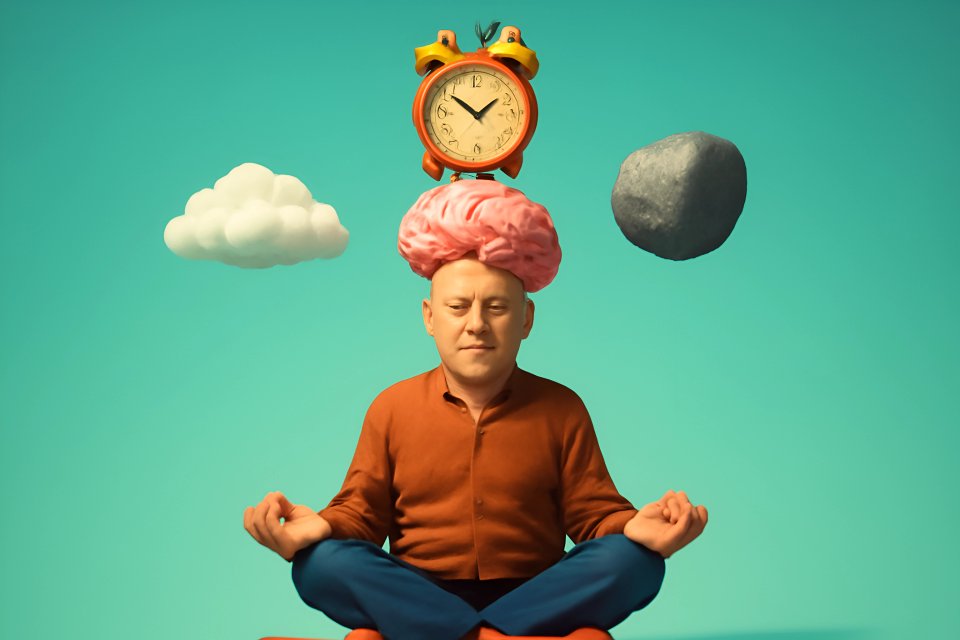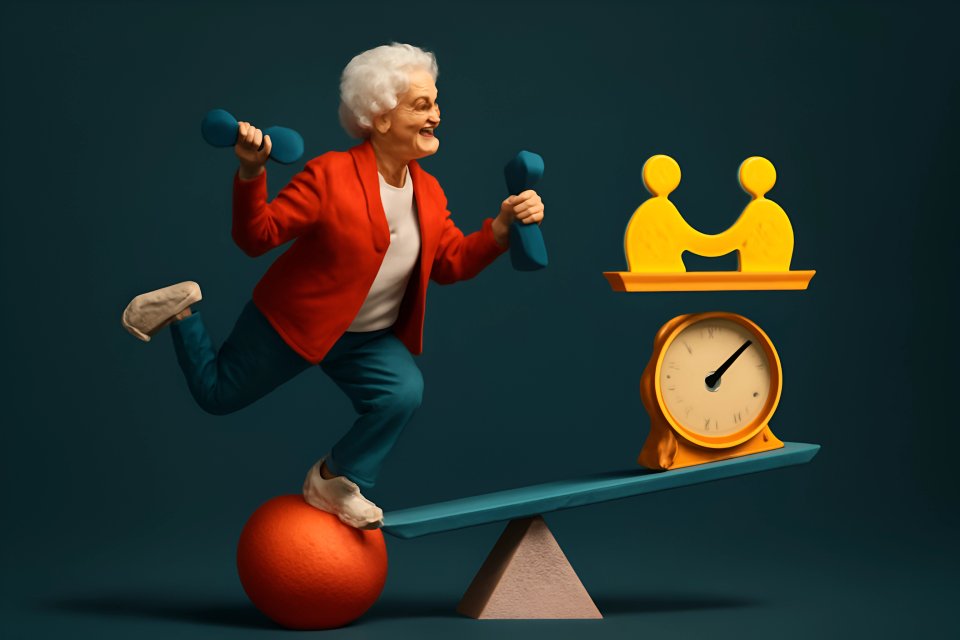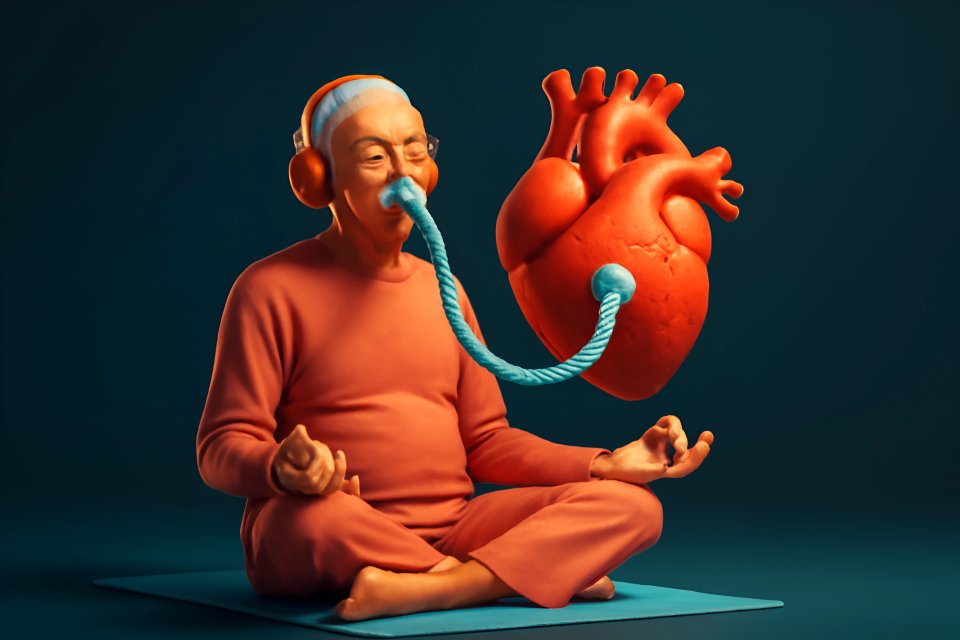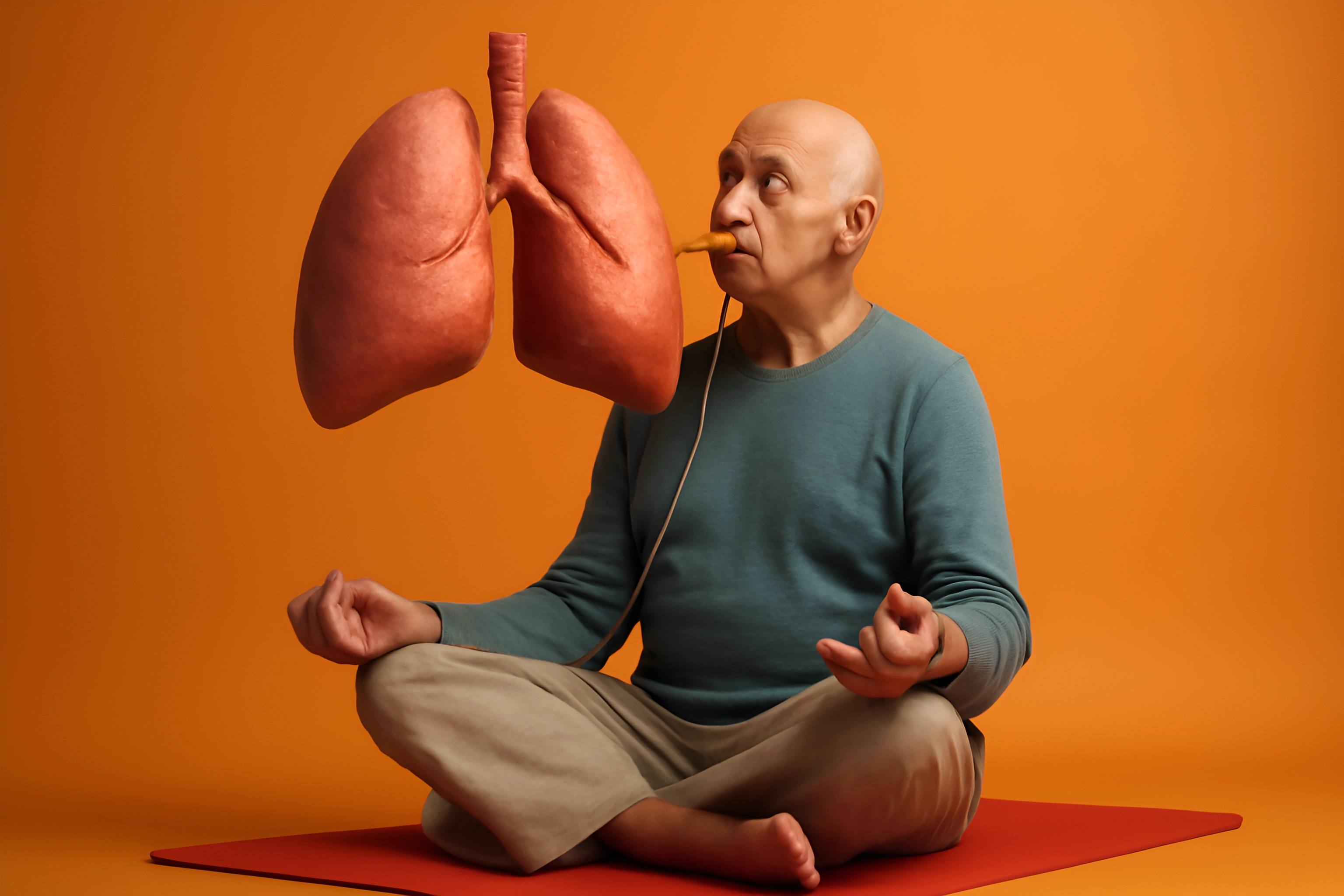
The phone rings. It’s your aging mother’s doctor with a question. An email lands in your inbox about a shift in your retirement plan. You glance at the calendar and realize your kids are coming home for the weekend, and you haven't even thought about groceries. Does this sound familiar? Life after 50, this supposed golden era of freedom, can often feel like you’re juggling more than ever before.
This isn't just a feeling; it's a physiological reality. The constant hum of these new pressures creates a state of chronic stress that can take a serious toll on your health, impacting everything from blood pressure to sleep quality. In fact, research shows that unmanaged stress can accelerate your biological age, making you feel older than you are. But what if you had a way to fight back, to reclaim your calm, and to build a deep well of resilience from within?
You do. This isn't about expensive retreats or complicated philosophies. It's about two simple, powerful, and scientifically-backed tools you already possess: your breath and your mind. This post will guide you through the science behind this dynamic duo, provide easy-to-follow exercises, and show you how to weave these powerful relaxation techniques for seniors into the fabric of your daily life.
The Unique Stress Landscape of Midlife and Beyond
Let’s be honest: the stress you feel today is different. It’s not the same as the pressure of building a career or raising young children. This new chapter brings a unique set of challenges that demand a new set of tools. Your body is changing, with hormonal shifts that can amplify your stress response. Research confirms that during menopause, for example, declining estrogen can increase cortisol sensitivity by a staggering 200%, making you feel more on edge.
You might be navigating profound life transitions, like planning for retirement or adjusting to an empty nest, which can dismantle identities you’ve held for decades. Many of us are also part of the "sandwich generation," caught between the needs of our aging parents and our adult children. This role increases psychological distress by 37% compared to other age groups, stretching our emotional resources thin.
On top of it all, this is a time for reflection. You might find yourself grappling with bigger questions about your life, your legacy, and your future health. Because these stressors are so deeply personal and unique to this stage of life, our approach to managing them must be just as tailored. This is precisely why senior stress relief methods like deep breathing and meditation are a perfect fit—they are low-impact, infinitely adaptable, and can be practiced anywhere, anytime, giving you control when you need it most.
Step One: Master Your Breath, Master Your Response
What if I told you that you have a built-in tranquilizer, a biological reset switch you can flip anytime you feel overwhelmed? It’s your breath. Not the shallow, unconscious breathing you do all day, but deep, intentional diaphragmatic breathing—breathing from your belly. It’s the simplest, most profound tool for taking back control from stress.
The science is surprisingly simple. When you breathe deeply and slowly, you activate your parasympathetic nervous system, the body's "rest and digest" command center. This simple act sends a powerful signal to your brain that you are safe, triggering a cascade of calming effects throughout your body. Studies show that consistent practice can lower systolic blood pressure by 10-15 mmHg, directly counteracting one of the most dangerous physical symptoms of chronic stress.
This isn't just about feeling calm; it's about actively protecting your health. For those managing conditions like COPD or asthma, strengthening your diaphragm through breathing exercises can improve respiratory efficiency by up to 40%. You are literally training your body to be more resilient.
Your 3-Minute Deep Breathing Exercise
Ready to try it? You don't need any special equipment. All you need is a quiet moment and a willingness to focus.
- Find a comfortable position, either sitting in a chair with your feet flat on the floor or lying down.
- Place one hand on your upper chest and the other just below your rib cage, on your belly.
- Inhale slowly through your nose for a count of four. As you do, focus on feeling your belly expand and push your hand out. Try to keep the hand on your chest as still as possible.
- Hold your breath for a brief moment.
- Exhale slowly through pursed lips (as if you were whistling) for a count of six. Feel your belly gently contract as you release the air.
- Repeat this cycle for 5-10 breaths, focusing on the rhythm and the sensation of your belly rising and falling.
Meditation for Older Adults: It's Not About an Empty Mind
Now, let’s talk about meditation. Perhaps you’ve thought, "I can't meditate. My mind is too busy." This is the single biggest myth about meditation, and it’s time to bust it for good. Meditation is not about forcing your mind to be empty; that’s impossible. It’s the simple practice of noticing your thoughts without getting swept away by them and gently guiding your attention back to the present moment.
The benefits for those of us over 50 are nothing short of remarkable. Meditation is a powerful tool for cognitive health, with research from Harvard showing that regular practice can rebuild gray matter in the brain. In fact, studies reveal that long-term meditators over 50 have a brain age that is, on average, 5.9 years younger than their chronological age. It’s one of the most effective ways to sharpen your focus, improve memory, and promote the deep, restorative sleep that so many of us struggle with.
Beyond the brain benefits, meditation fosters a profound sense of acceptance and peace. It helps you navigate life’s changes with less emotional reactivity and more grace. For the nearly 48% of older adults who report issues with insomnia, a simple meditation practice before bed has been shown to significantly improve sleep quality, helping you wake up feeling refreshed and ready for the day.
A 5-Minute Guided Meditation for Beginners
Think of this as a workout for your mind. It’s simple, gentle, and incredibly effective.
- Begin with the deep breathing exercise from the previous section. Take 3-5 slow, deep belly breaths to settle your body and mind.
- Now, choose an "anchor" for your attention. This can be the physical sensation of your breath moving in and out of your nostrils, the feeling of your hands resting in your lap, or a simple word like
calmorpeacethat you repeat silently. - Your mind will wander. This is not a failure; it is the nature of the mind. When you notice you've been carried away by a thought, a worry, or a sound, simply and gently acknowledge it by saying to yourself, "thinking."
- Without any judgment or frustration, gently guide your attention back to your chosen anchor. Continue this process for 5 minutes. The goal isn't to have zero thoughts, but to practice returning to your anchor again and again.
How Deep Breathing Supercharges Your Meditation Practice
Deep breathing and meditation aren't two separate practices to choose between; they are a powerful team that works in perfect synergy. Think of deep breathing as the warm-up for your meditation. It’s the key that unlocks the door, calming your physical body so your mind can follow.
This powerful synergy is what makes deep breathing meditation techniques for stress management over 50 so incredibly effective. The breath calms the body's fight-or-flight response, which in turn helps to quiet the mental chatter that can make meditation feel so challenging at first. Research shows that when practiced together, these techniques can produce a cortisol reduction that is 200% greater than practicing either one alone.
You are creating a positive feedback loop. The breath provides a stable, physical anchor that makes the mental work of meditation more accessible. In turn, the focused awareness you cultivate during meditation helps you become more mindful of your breath throughout the day, allowing you to use it as an in-the-moment stress-reduction tool. To further support your body's stress response, consider pairing these mental practices with gentle physical activity, like the exercises found in our guide to mastering sustainable low-impact workouts for seniors.
Practical Ways to Integrate Mindfulness into Your Day
The secret to making these practices stick isn't finding an extra hour in your day. It's about weaving small, powerful moments of calm into the routine you already have. It’s about transforming moments of mindless waiting into moments of mindful restoration.
Start your day with a Morning Ritual. Before you even get out of bed or while your coffee is brewing, take just five minutes for a few deep belly breaths. This simple act can lower your baseline cortisol levels for the entire day, making you less reactive to whatever comes your way. You can also use external cues, like the Traffic Light Reset. Instead of getting frustrated at a red light, use it as your signal to take three slow, deep breaths.
You can also create a Pre-Appointment Pause. Whether you're in the car or the waiting room before a doctor's visit, take one minute to close your eyes and focus on your breath. This can help prevent "white coat syndrome" and give you a clearer head for your appointment. Finally, create an Evening Wind-Down. A five-minute meditation can be the perfect transition from a busy day to a restful evening, signaling to your body and mind that it's time to let go. These small habits, when paired with a heart-healthy diet, create a holistic defense against stress. You can find great ideas in our guide to age-defying nutrition and meal planning.
It's Never Too Late to Invest in Your Peace of Mind
Stress in this chapter of life is real, but it does not have to define your experience of aging. You now know that you possess two of the most powerful, effective, and accessible tools for managing it: your breath and your focused attention. These aren't just coping mechanisms; they are practices of biological rejuvenation that can reverse stress-induced epigenetic aging and build profound resilience.
At FitOverFifty, we believe that aging is an opportunity for growth, vitality, and joy. Embracing these simple practices is a direct investment in that future. It's a declaration that you are taking control of your well-being, one conscious breath at a time. Your journey to a calmer, healthier, and more vibrant you starts right now.
What's one small moment this week where you could practice a few deep breaths? Share your ideas in the comments below—let's inspire each other!








